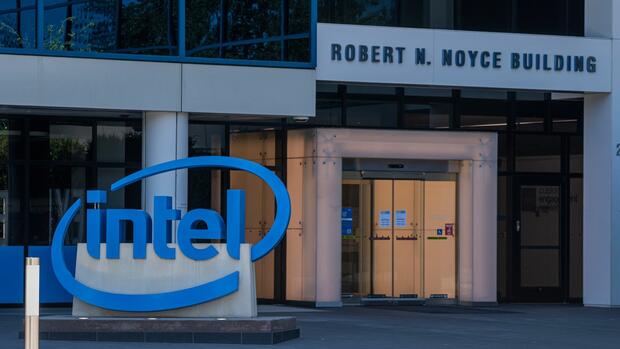Santa Clara Intel has hit its annual targets after a slump in sales and red numbers last quarter. The chip giant expects less revenue and profit than three months ago. Investors dropped the stock by more than eight percent in after-hours trading on Thursday.
Revenue fell by 22 percent year–on-year to 15.3 billion dollars (15 billion euros) in the second fiscal quarter – according to Intel’s calculations completed at the beginning of July. The bottom line was a loss of $ 454 million after a profit of just over five billion dollars a year earlier.
One trigger was the decline in revenues in the PC business by a quarter to $ 7.7 billion. The division’s operating profit fell even more sharply by 73 percent to just under one billion dollars. For chips for data centers, revenue fell 16 percent to $4.6 billion – and operating profit narrowed from just under $2.1 billion to $214 million combined.
In the corona pandemic, significantly more companies and private individuals had ordered PCs in order to be able to work flexibly. However, in view of the current economic slowdown, high inflation and a return to the offices, demand has fallen. The US group generates around half of its sales with semiconductors for desktops and laptops.
For the full year, Intel has now lowered its revenue forecast to $ 65 to $ 68 billion from $ 76 billion previously. That would mean a 13 percent decline at the lower end of the range. Adjusted earnings per share are now also expected to be significantly lower. The figures fell well short of analysts’ expectations.
Intel itself is disappointed with the quarterly results, said CEO Pat Gelsinger. “The quarterly results are below the standards we have set for the company and our shareholders.“ He mainly referred to the economic downturn, but also acknowledged problems on the Intel side, among other things, when ramping up the production of some chips. The Californian company has already announced price increases in mid-July.
Gelsinger had initiated a change of strategy at Intel: the group should increasingly produce chips not only for its own range, but also as a contract manufacturer for other companies. The semiconductor giant is thus competing, among other things, against the heavyweight TSMC.
Despite the headwinds, Chief Financial Officer David Zinsner does not want to let go of the expansion course and stated that he wants to stick to the business strategy. Among other things, the Group is investing around 17 billion euros in the construction of two semiconductor plants in Magdeburg, Saxony-Anhalt, and up to 100 billion dollars in a huge production facility in the US state of Ohio. Zinsner does not expect Ohio construction to be delayed despite the economic downturn.








